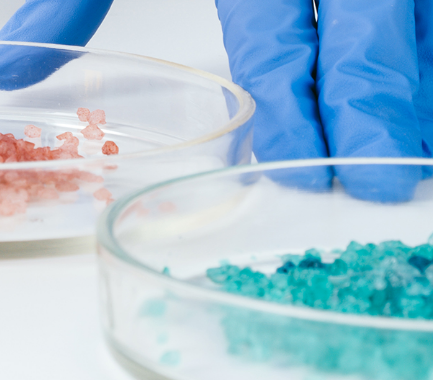Your contact
PENPET-Team - Hamburg

Jan Prager
Sales
Tel. +49 (0) 40 - 675 7 99 10
sales@penpet.de
Get in touch with us.
Hexyl glycol
Hexyl glycol is an organic compound that belongs to the glycol ethers and is used in numerous areas of application as a high-boiling solvent. To obtain the substance, 1-hexanol is ethoxylated with ethylene oxide under basic catalysis.
Hexyl glycol is an important industrial solvent for natural resins, synthetic resins, cellulose nitrate, polyacrylates, polyvinyl ethers, dyes and plasticizers. It is used in the production of paints, varnishes, coatings, antifreeze, lubricants, adhesives and cleaning agents, among other things. As an intermediate product in the chemical industry, the substance is used to produce compounds such as neopentanoate and hexyloxyethyl phosphate.
At PENPET you get hexyl glycol of the highest quality, from a reliable partner who will also meet your requirements in the long term. We look forward to receiving your inquiry for an individual offer. Prompt delivery of the liquid compound can be made in packages with different weights.
CAS no. 112-25-4
EINECS no. 203-951-1
Molecular formula: C8H18O2
Synonyms: Hecyl glycol, HG, ethylene glycol monohexyl ether, EGHE, hexyl cellosolve, n-hexyl glycol, 2-(hexyloxy)ethan-1-ol, 1-hexyloxy-2-hydroxyethane, 3-oxa-1-nonanol
Areas of application: High-boiling solvent, component of paints, dyes, coatings, adhesives, cleaning agents, antifreeze and lubricants, starting material for chemical syntheses
More Information
As an ether, hexyl glycol is made up of two components which are connected to one another via an ether group. The molecules of the substance consist of a hexyl group, a residue of ethylene glycol and an oxygen atom as a connecting ether group in the center. The terminal hydroxy group of the ethylene glycol characterizes the reaction behavior of the entire compound. Due to this functional group, hexyl glycol enters into the typical reactions of alcoholic compounds and can, among other things, form esters together with carboxylic acids or combine with other alcohols to form more complex polyethers.
Hexyl glycol is a colorless liquid with a mild odor. The thin liquid compound has a high temperature resistance. It reaches its boiling point when heated to 208 °C and only freezes when it cools down to below -45 °C. This makes it particularly suitable for use in high-temperature environments such as in motors and machines.
Hexyl glycol has slightly hygroscopic properties. However, the solubility of the substance in water is very limited. Due to its lower density, the liquid compound settles on contact with water. In contrast, hexyl glycol is very soluble in many organic solvents such as diethyl ether and ethanol and can be mixed with them in any ratio.
Hexyglycol can be stored stably and safely when handled as directed. However, contact with the oxygen in the air can easily lead to the formation of explosive peroxides. The substance can also react violently with strong oxidizing agents.
Hexyl glycol is a flammable compound, but it is difficult to ignite. However, due to their high density, the vapors of the substance can spread unnoticed on the floor of the work rooms and form highly flammable and explosive mixtures with the ambient air. To avoid remote ignition, when processing the compound, ensure that there is a sufficient safety distance from possible sources of ignition such as hot surfaces, electrostatic discharge, sparks and open flames. Toxic gases such as carbon dioxide and carbon monoxide are produced when hexyl glycol is burned.
According to the GHS classification, hexyl glycol is a hazardous substance. Contact with the compound can cause protracted redness, irritation and swelling of the skin. Soaked parts of the body should be cleaned thoroughly with water and polyethylene glycol 400 and then examined by a doctor. Exposure to the liquid or its vapors and aerosols can also cause significant irritation and severe damage to the cornea. After rinsing under running water, immediate ophthalmological treatment must be arranged.
Inhaling hexyl glycol can cause respiratory irritation. If the compound is swallowed, severe irritation of the mouth, esophagus and stomach lining can be expected. The absorption of hexyl glycol into the metabolism triggers central nervous system disorders such as drowsiness, coordination difficulties, drowsiness and coma. In addition, breathing difficulties and disorders of liver and kidney function can occur.
Hexyl glycol is a slightly water-polluting substance that can cause significant damage to aquatic organisms. Prevent the compound from entering water bodies, the ground or waste water. The escape of larger quantities into the environment must be reported to the competent authorities. As a hazardous substance, hexyl glycol is subject to special transport regulations.
